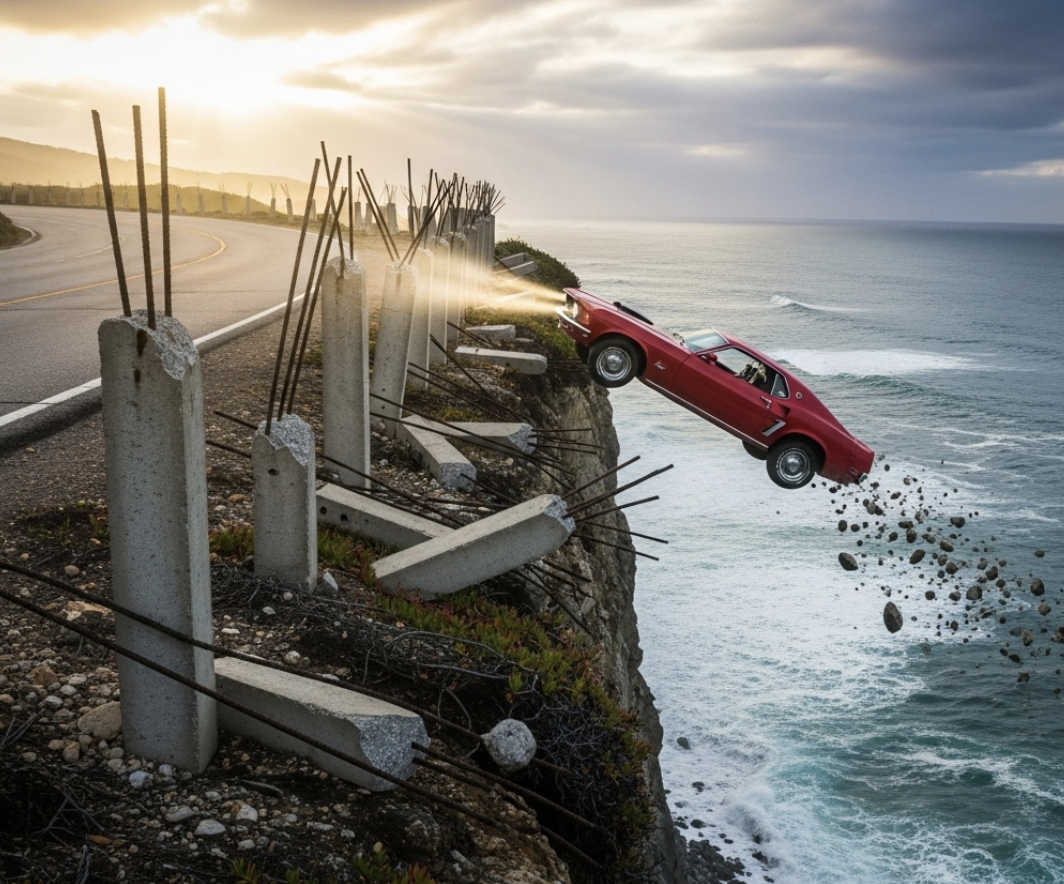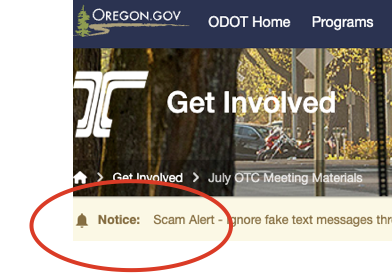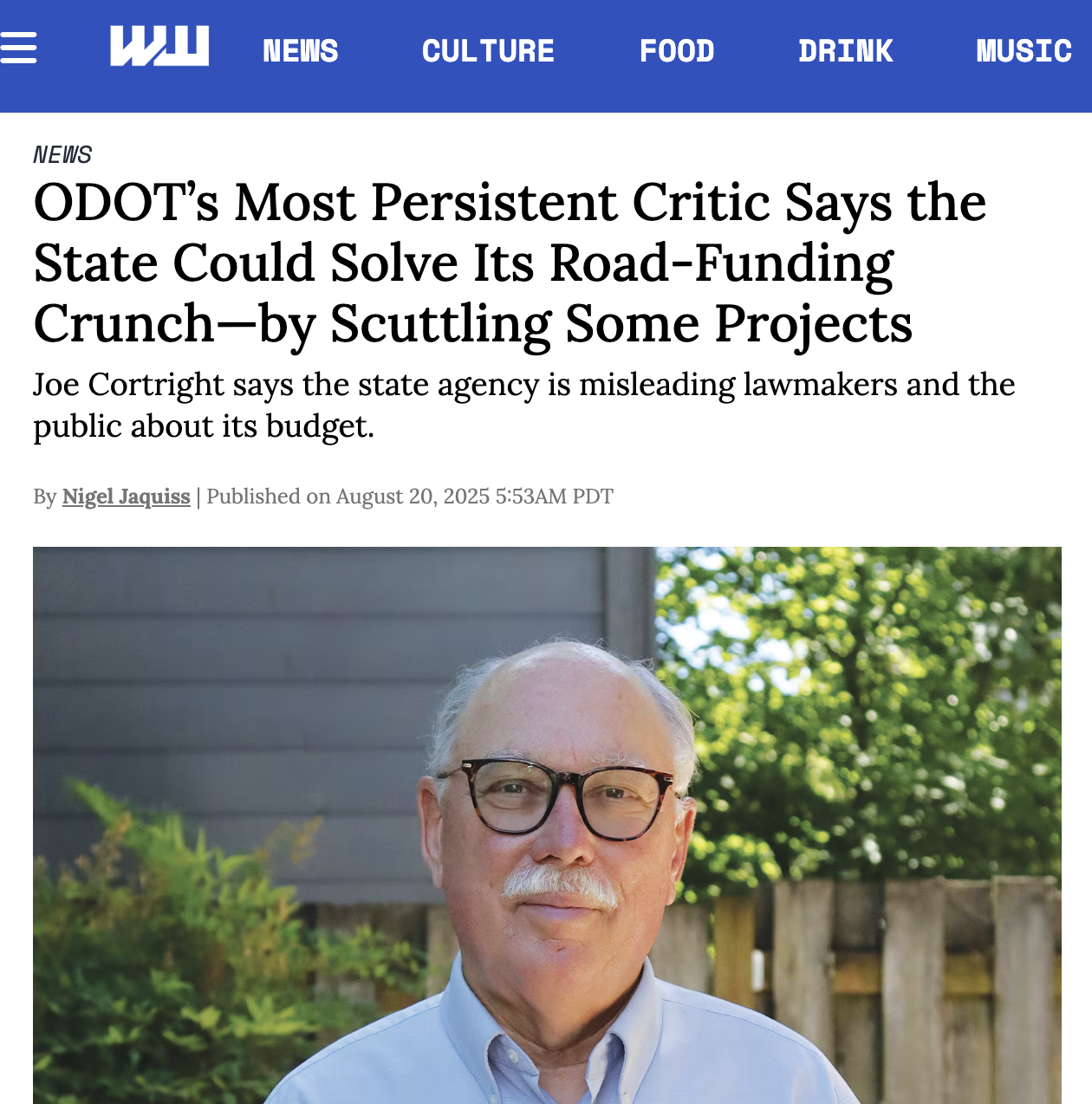What City Observatory Did This Week
Caution: Scam Alert. The Oregon Department of Transportation’s plans to move ahead with the I-5 Rose Quarter project when it lost over $400 million in federal grants, was refused additional funding by the 2025 Oregon Legislature and doesn’t have any toll revenue constitutes a scam.
No Guardrails: The Oregon Department of Transportation (ODOT) remains fundamentally unaccountable despite repeated legislative attempts at oversight. When lawmakers imposed strict “sideboards” in 2013 to control costs on the Columbia River Crossing—including caps on spending, required federal funding commitments, and mandatory financial reviews—ODOT simply had them quietly repealed in 2023 with no public debate.
 The agency routinely evades, subverts, or eliminates accountability measures while claiming legal restrictions prevent it from funding basic services like snow plowing or retaining staff. This reveals ODOT’s true priorities: protecting expensive megaprojects while sacrificing core transportation functions. Without real enforcement mechanisms, legislative accountability measures remain toothless.
The agency routinely evades, subverts, or eliminates accountability measures while claiming legal restrictions prevent it from funding basic services like snow plowing or retaining staff. This reveals ODOT’s true priorities: protecting expensive megaprojects while sacrificing core transportation functions. Without real enforcement mechanisms, legislative accountability measures remain toothless.
Must Read
Transportation Re-authorization: Streetsblog has terrific reporting on Transportation for America’s advice on how to influence the upcoming transportation re-authorization legislation Congress will consider in 2025. “Re-authorization” is beltway-speak for re-writing the controlling legal language that specifies how tens of billions in federal transportation funds are spent. Buried in the seeming minutiae of this legislation are a host of policy decisions that determine what gets built–and what doesn’t–and where.
Transportation for America has many valuable recommendations for improving the nation’s transportation laws, starting with devolving responsibility down to the local level, rather than granting so much power to car-centric state highway departments. T4A also suggests ways to change the metrics of transportation policy to get better results, notably by emphasizing the uses of accessibility measures (i.e. how we make it easier to reach common destinations) rather than promoting vehicle speeds and traffic volumes. As Streetsblog reports, regulatory reform will require major changes:
T4A says the answer isn’t just to tweak the National Environmental Policy Act review process or remove steps from the permitting gauntlet, but to develop a radically new permitting and review framework based on the anticipated outcomes a project will have, like “how many jobs and essential services (like grocery stores, schools, banks, and medical care) people can access by all modes of transportation.”
Transit is by far safer than car travel, though you’d never know if from the media. Todd Litman has a powerful commentary at Bloomberg, pointing out that the right-wing media paranoia about the dangers of traveling by transit simply aren’t borne out by actual data. In reality, car travel is vastly more dangerous for car occupants, and especially people outside of their vehicles. The media present a misleading narrative that makes it seem like big city transit is dangerous, but that’s not true. Litman writes:
As a result of this distorted information, most people underestimate driving’s dangers and transit’s safety. In fact, automobile travel has about ten times the death rate as public transit, and transit vehicles also impose less risk on non-occupants like cyclists, pedestrians and other road users. Cars should come with warnings: “Driving causes painful injuries, disabilities and death.”
Transit agencies–and the media–need to do a better job of informing the public of these basic facts. Failing to do so does our cities and our nation, a great disservice.
New Knowledge
Parks and Social Capital. Robert Putnam helped popularize the idea of social capital in his book, “Bowling Alone” which pointed out that Americans had become increasing isolated from one another and largely segregated by social class and political outlook. Many have been looking for ways to nourish and promote cross-cutting opportunities for social interaction.
A new paper suggests that one key element of the urban environment, parks, could be a facilitator of these interactions. Parks can serve as a setting where diverse groups interact with one another on a regular basis. This study looks at the relationship between measures of social capital on the one hand, and the quality of urban parks on the other. Social capital is measured using Facebook data quantifying the degree to which a persons friends come from different economic groups; parks quality is measured using Park Score, which aggregates data on park acreage, amenities, investments and other factors. The study provides data for the 100 most populous U.S.cities.
. . . residents of cities with the highest ParkScore rankings are more socially connected and engaged with their neighbors than residents who live in cities with lower-ranking park systems. Relative to the bottom 25 ranked cities, the top 25 ParkScore cities had a median of 26 percent more social connections between different income groups (“economic connectedness”), 61 % more volunteers per capita, and 45 % more civic organizations per capita.
This study shows a snapshot of the relationship between park quality and social capital, but doesn’t necessarily reveal the direction of the relationship: it is likely that communities with strong social capital have more support for shared spaces, like parks, as well as parks themselves contributing to social interaction.


